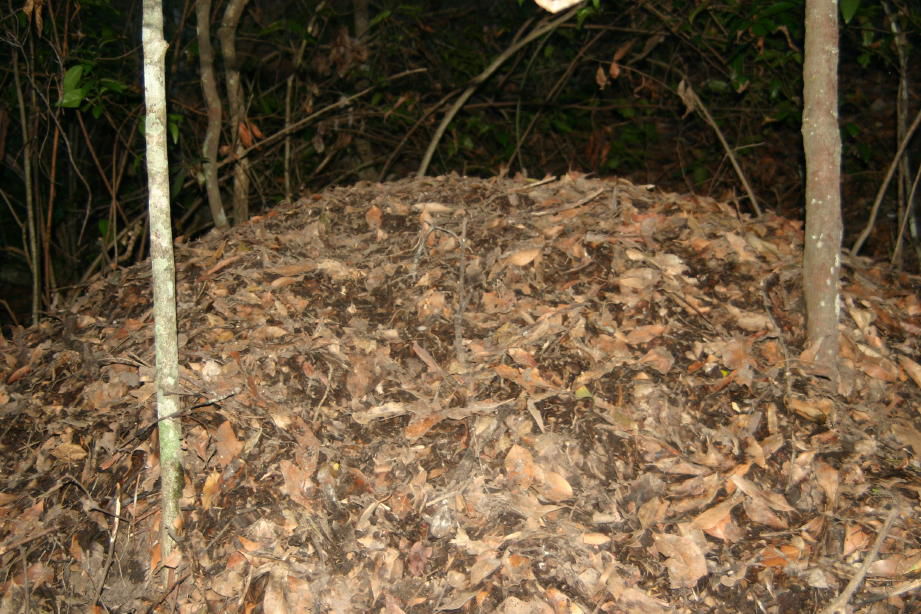
The Incubator Bird---Evidence for Creation in Australia
While in Australia, each morning I go for a 3-mile walk through a National Park right on the Coast. I meet many turkeys on this beautiful walk. These turkeys are fascinating---they are called "incubator birds." This morning I took a photograph of part of the trail I walk through and a photo of one of the birds and a nest (taken at 6:30 am Thursday morning). What a reminder of creation---how could such a bird just evolve by natural processes? I downloaded some material from the internet (from www.straight-talk.net) that will explain more about the birds and the large nests they build:
The three to four pound Megapode or "incubator bird" (brush turkey) of Australia is unique among birds. All birds use body heat to incubate their eggs except the incubator bird.Instead, they pile up great heaps of debris which serve as incubators; the warmth of the fermenting compost provides the heat ...
After testing the nest to be sure it is adequate for incubating her eggs, the female lays 20 to 35 eggs at the rate of one egg every three days for up to seven months. As many as 16 eggs can exist in a normal mound at any one time. Each egg weighs about a half a pound and is as large as an ostrich egg---a tremendous amount of work for a three to four pound hen. Upon completion of her laying task, she leaves the nest, never to return and takes no part in the incubation and raising of her chicks.
At this point the male begins to perform his job of managing the incubation of the deeply buried eggs. For incubator bird chicks to survive they require a precise temperature of exactly 91°F. It is the male's responsibility to ensure that the temperature of the mound will not vary more then one degree on either side of 91°F!
Some scientists think the bird's thermometer is in its beak. Others believe its tongue can distinguish 91°F and a few tenths of a percent above and below 91°F.
To maintain the temperature, the male digs down into the nest and checks the temperature. On hot days, he may pile extra sand on top of the nest to shield it from the sun. He may even rearrange the entire pile of rotting leaves and grasses several times a day.
On cooler days, the male megapodes will push material off the top of the nest to permit more sunlight to penetrate the decaying organic material. Or, to keep the humidity at 99.5% around the eggs, he may dig conical holes toward the eggs to get more moisture deeper into the nest. Keeping Seymour writes: "This process is very precise: one centimeter of fresh material added to the mound can increase core temperature about 1½°C."



Ken

Answers in Genesis is an apologetics ministry, dedicated to helping Christians defend their faith and proclaim the good news of Jesus Christ.
- Customer Service 800.778.3390
- © 2024 Answers in Genesis
